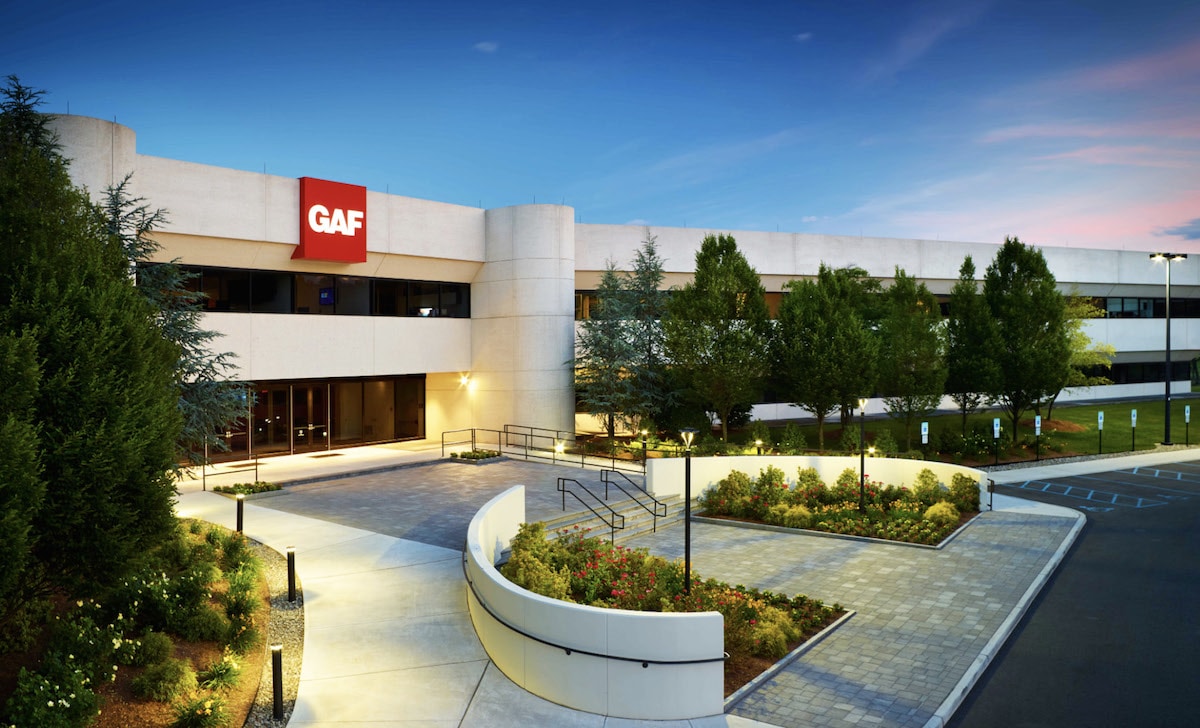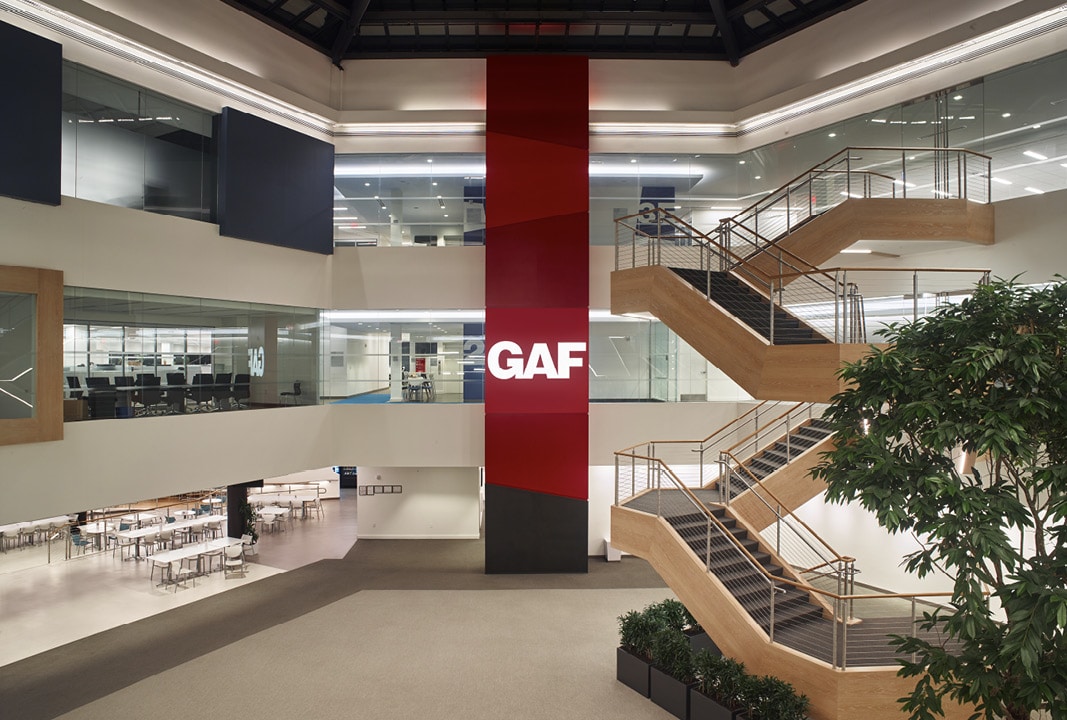GAF has reinvented the notion of what a building can do.

[Photo: Courtesy of GAF]
In a world where 1,000-year-floods, superstorms, and extended heat waves are increasingly common, sustainability and resilience are being spoken of in the same sentence. The Parsippany, New Jersey headquarters of GAF—North America’s largest roofing manufacturer—provides an eye-opening picture of how the two are intertwined.
In 2015, the company moved its headquarters from Wayne, New Jersey to Parsippany for a variety of reasons, but one driving consideration was storm resiliency. The move came after Hurricane Sandy devastated huge swaths of the area. Business interruption was part of the aftermath, alongside devastation and widespread property damage in the region.
The move happened to coincide with an increased focus on resiliency from the USGBC. Long story short, the new GAF headquarters is LEED-certified and was the first building in the world to earn the IPpc98 credit for resiliency. “The primary purpose was to be prepared for disasters and associated disruptions,” says Ana Meyer, the company’s executive director of sustainability. “Being the first LEED building to achieve a Resilient Pilot credit was the outcome of GAF following our focus and commitment to resiliency and sustainability.”

[Photo: Courtesy of GAF]
Quality Products and Planning
As one might imagine, the roof is a critical element of resiliency. Given that GAF is in the roofing business, they were well equipped to handle that task by using EverGuard Extreme® and EnergyGuard™ Polyiso Insulation. Their new 330,000-square-foot, three-story building is designed to withstand extreme weather conditions and exceeds local code requirements.
Based on the company’s experience with Hurricane Sandy, they also knew that what’s outside the building can be as impactful as the building itself. They conducted a site analysis and looked at future impacts of storms, including flooding, when choosing the Parsippany site. The company’s new LEED building was sufficiently high enough to avoid flooding, as were its access roads.
The GAF Headquarters
The new building added a redundant power system with a dedicated generator for an emergency command center, tanks with 1,200 gallons of fuel power, and a second “life safety” power generator for the rest of the building. For short-term power outages, a sun-lit atrium in the building’s core was designed to enable continued operations during the day.
Of course, the overall infrastructure will always be under the direction of human managers. A “Business Continuity and Disaster Recovery Plan” defines a chain of command and points of contact to ensure the right decisions are made and communicated as needed. Monthly training exercises keep the system fresh and familiar. The plan is all part of keeping employees safe as well as maintaining their financial wellbeing. “Resiliency starts with our products and continues into our operations,” Meyer says. “Resiliency is important to life safety and business continuity so we can take care of our employees and our customers.”
FROM OUR NOV+DEC 2018 ISSUE

The preferred publication of leading green professionals.

GAF’s LEED-certified headquarters shows the company’s commitment to resiliency. [Photo: Courtesy of GAF]
Commitment to Quality
Resiliency and sustainability are part of the corporate culture at GAF, and they are commitments that are woven into much of the company’s product lines. In 2011, GAF began offering a Lifetime Limited Warranty (you can read more on GAF’s website) on all of its laminated shingle products. With GAF Advanced Protection® Shingle Technology, the shingles provide excellent durability and wind resistance.
“We are committed to providing resilient and sustainable product solutions that help green building professionals meet their sustainable and resilient design goals,” Meyer says. “GAF has a very large offering of products that can help earn credits for LEED certification and Living Building Challenge. Our gaf.ecoscorecard.com is a great resource to help you find these solutions. We also hold Resiliency Design Summits across the country, sharing best practices and teaching our local green building professionals how to incorporate resiliency into their projects.”
Sustainability in the Streets
As if that weren’t enough, GAF StreetBond® Coatings with Solar Reflective Colorants perform several beneficial functions. Anyone who’s been in a city where bicycle lanes are incorporated into busy thoroughfares has probably seen the green, white, or red coatings (there’s a range of colors available) that delineate where bicyclists are given the right-of-way. These lane markings increase safety for bicyclists while making it easier for people to get out there and exercise.
These GAF coatings similarly define bus lanes, school zones, handicapped parking, and off-street running paths. The solar reflective coatings reflect more of the sun’s energy to help keep pavement surfaces cooler and can contribute toward satisfying LEED credits. Whether you’re looking up at the roof or down by your feet, there’s a good chance you’re looking at a GAF product—or what GAF makes possible.
